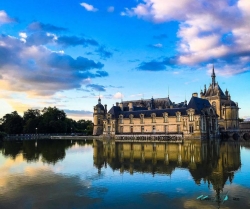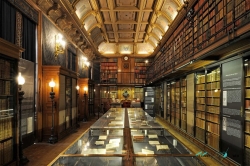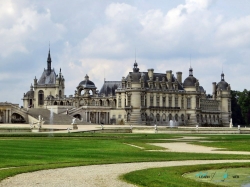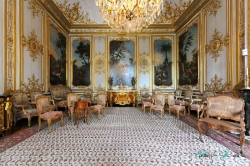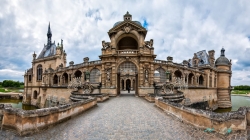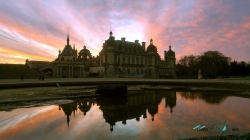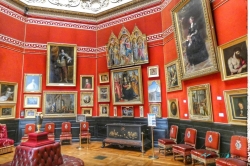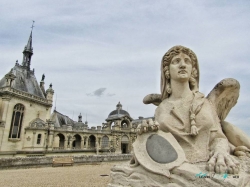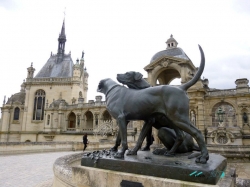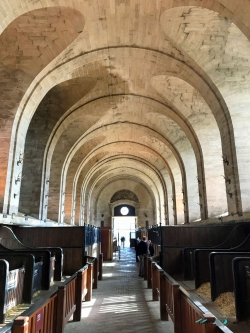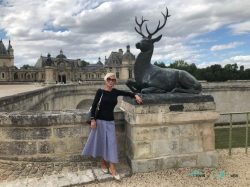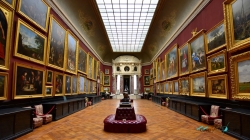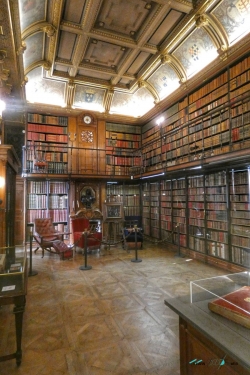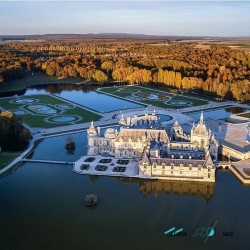The Château de Chantilly (pronounced [ʃɑto d(ə) ʃɑ̃tiji]) is a historic French château located in the town of Chantilly, Oise, about 50 kilometres (30 miles) north of Paris. The site comprises two attached buildings: the Petit Château built around 1560 for Anne de Montmorency and the Grand Château, which was destroyed during the French Revolution and rebuilt in the 1870s. It is owned by the Institut de France, to which it was bequeathed in the will of Henri d'Orléans, Duke of Aumale.
An historic monument since 1988, it is open to the public. The château's art gallery, the Musée Condé, houses one of the finest collections of paintings in France. It specialises in French paintings and book illuminations of the 15th and 16th centuries.
The estate's connection with the Montmorency family began in 1484. The first mansion (no longer in existence, now replaced by the Grand Château) was built, between 1528 and 1531, for Anne de Montmorency by Pierre Chambiges. The Petit Château was also built for him, around 1560, probably by Jean Bullant. In 1632, after the death of Henri II de Montmorency, it passed to his nephew, the Grand Condé, who inherited it through his mother, Charlotte Marguerite de Montmorency.
Molière's play, Les Précieuses ridicules, received its first performance here in 1659. Madame de Sévigné relates in her memoirs that when King Louis XIV of France visited there in 1671, François Vatel, the maître d'hôtel to the Grand Condé, committed suicide when he feared the fish would be served late. The collection includes important works of the cabinetmaker André-Charles Boulle.
The original mansion was destroyed in the French Revolution. It was repaired in a modest way by Louis Henri II, Prince of Condé, but the entire property was confiscated from the Orléans family, between 1853 and 1872, during which interval it was owned by Coutts, an English bank. Chantilly was entirely rebuilt, between 1875 and 1882, by Henri d'Orléans, duc d'Aumale (1822–1897) to the designs of Honore Daumet. The new château met with mixed reviews. Boni de Castellane summed up one line of thought: "What is today styled a marvel is one of the saddest specimens of the architecture of our era — one enters at the second floor and descends to the salons". In the end, the Duc d'Aumale bequeathed the property to the Institut de France upon his death in 1897.
An historic monument since 1988, it is open to the public. The château's art gallery, the Musée Condé, houses one of the finest collections of paintings in France. It specialises in French paintings and book illuminations of the 15th and 16th centuries.
The estate's connection with the Montmorency family began in 1484. The first mansion (no longer in existence, now replaced by the Grand Château) was built, between 1528 and 1531, for Anne de Montmorency by Pierre Chambiges. The Petit Château was also built for him, around 1560, probably by Jean Bullant. In 1632, after the death of Henri II de Montmorency, it passed to his nephew, the Grand Condé, who inherited it through his mother, Charlotte Marguerite de Montmorency.
Molière's play, Les Précieuses ridicules, received its first performance here in 1659. Madame de Sévigné relates in her memoirs that when King Louis XIV of France visited there in 1671, François Vatel, the maître d'hôtel to the Grand Condé, committed suicide when he feared the fish would be served late. The collection includes important works of the cabinetmaker André-Charles Boulle.
The original mansion was destroyed in the French Revolution. It was repaired in a modest way by Louis Henri II, Prince of Condé, but the entire property was confiscated from the Orléans family, between 1853 and 1872, during which interval it was owned by Coutts, an English bank. Chantilly was entirely rebuilt, between 1875 and 1882, by Henri d'Orléans, duc d'Aumale (1822–1897) to the designs of Honore Daumet. The new château met with mixed reviews. Boni de Castellane summed up one line of thought: "What is today styled a marvel is one of the saddest specimens of the architecture of our era — one enters at the second floor and descends to the salons". In the end, the Duc d'Aumale bequeathed the property to the Institut de France upon his death in 1897.



